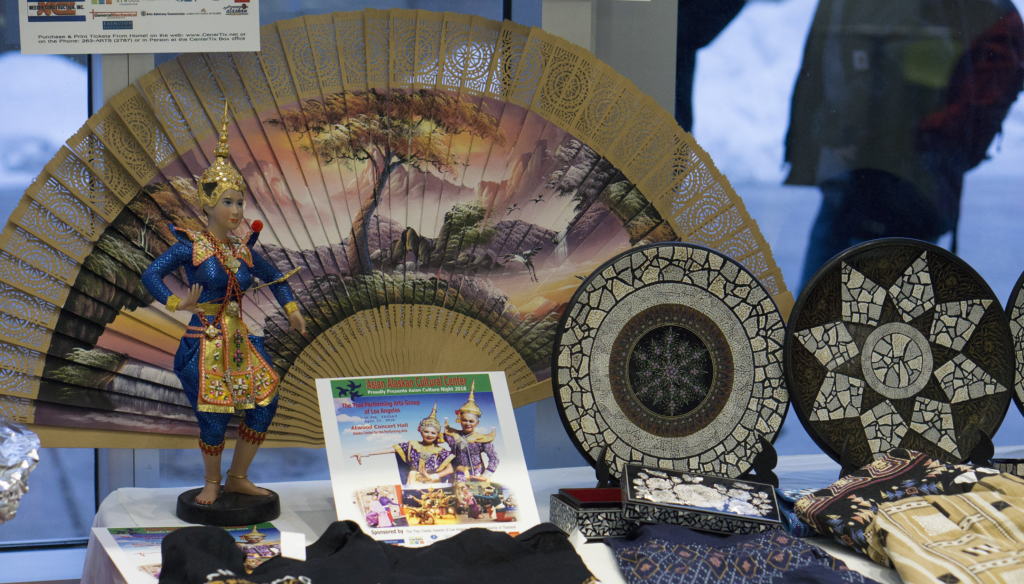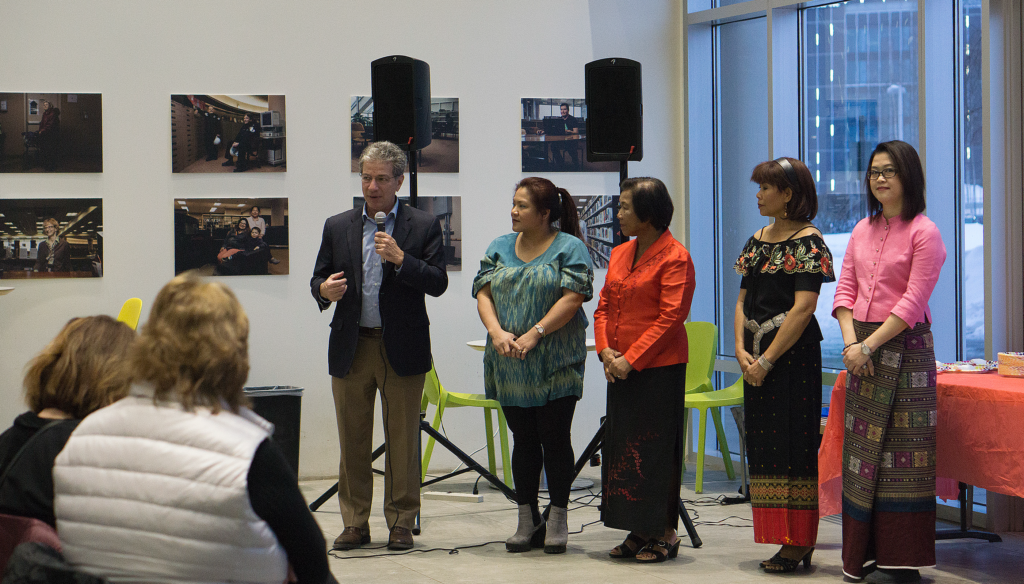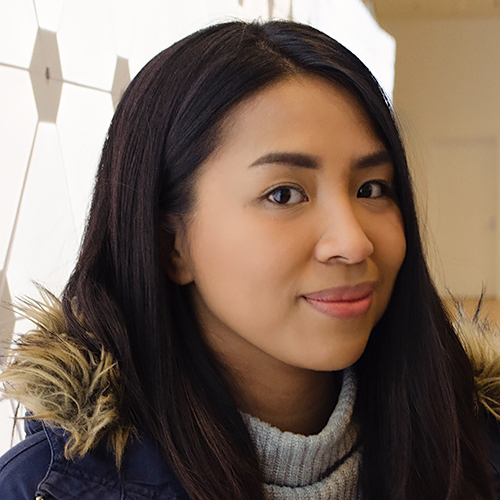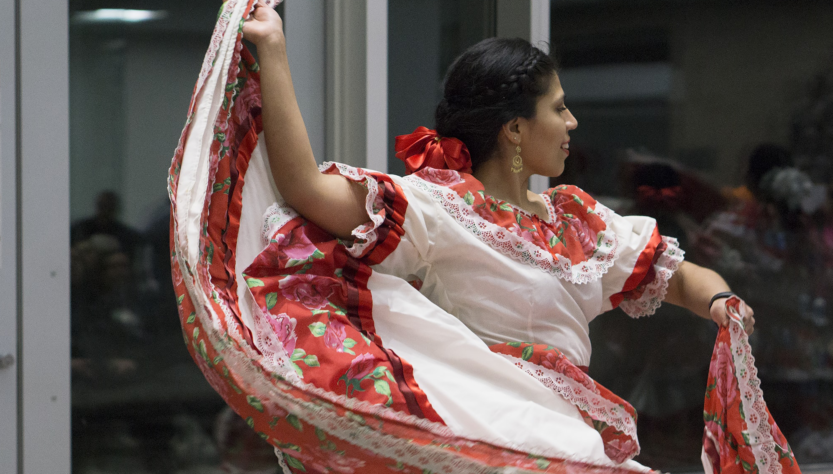Fostering community with tradition
Every month at the Z.J. Loussac Library, the community gathers to celebrate and learn about one of the many cultures in Anchorage. Started by the Mayor’s Office, Tradition Tuesday is an opportunity for the community to learn more about the history and customs of the different cultural groups who call Anchorage home.
The event has been hosted by several groups including representatives from the Hawaiian, Norwegian and Sudanese communities. Ana Gutierrez-Scholl, director of the Xochiquetzal-Tiqun Mexican Folkloric Ballet, said that Tradition Tuesday was an opportunity to showcase her Mexican heritage through music, dance and history.
“Most of our kids are from Alaska and they grew up here,” she said. “We try to honor our Mexican culture for the kids and for them to learn about all of the cultures in the world.”
Anchorage has been called one of the most diverse places in America, and rightfully so. In the Anchorage School District alone, one of two students have roots stemming from outside of the U.S. The district also reported in 2017 that 20 percent of students speak a language other than English, with 99 different languages spoken altogether.
Anchorage’s immigrant and first-generation population is still growing and in 2014, the Municipality of Anchorage joined the Welcoming Cities Initiative. The initiative was started by Welcoming America and is a national effort to help immigrants and refugees plant roots in the U.S.

cultures that make up the city. Photo by Shayne Nuesca
Welcoming Anchorage partners with businesses and organizations to help immigrants establish themselves in Anchorage through civic engagement, education, employment and entrepreneurship. Welcoming Anchorage also does its part to foster connections between the Anchorage community and their new neighbors.
Amy Coffman, special assistant to Mayor Ethan Berkowitz, leads Welcoming Anchorage. For her, the program is a mechanism for new Anchorage residents to find their place in the community.
“Welcoming Anchorage works to make sure that Anchorage is open and accessible to all people who come here no matter what language they speak, what their background is or how they identify,” she said.
Immersion and inclusion
Anchorage helps immigrant and refugee residents through various programs. Within the Anchorage School District, schools offer English Language Learners programs for students to learn how to comfortably speak the English language while including cultural aspects from their backgrounds.
The language program is designated for students to learn how to accommodate and immerse their cultural backgrounds into the Anchorage community. Within the Anchorage School District, schools like Fairview and Mountain View Elementary School have ELL teachers prepare social emotional lessons. Social emotional lessons help students gain language skills for their everyday lives to use with their peers.
Not only do immigrant and refugee students learn how to participate in their schools, there are also programs such as the Fresh International Gardens in Mountain View that contribute to the community of Anchorage.
Created in 2007 by Catholic Social Services, the program helps refugees hone their agriculture skills that they had in their former countries. This upcoming summer of 2018, they will be able to expand their crop yield and sell at the Mountain View Farmers Market.
“We’re working to break down barriers so that they can be successful in the workplace or as entrepreneurs…understanding how the government works and the different ways we all become a part of our own community,” Coffman said.
Contributions of immigrants to Anchorage
“Diversity is humanity’s inheritance and it’s what makes us rich.” — Ana Guitierrez-Scholl
In 2014, the immigrant population grew to 25,213 people in Anchorage. Although immigrants make up only 1.5 percent of the overall population, their economic contributions are significant.
New American Economy researched Anchorage’s immigrant population in 2016 and found that immigrants in Anchorage were 11 percent more likely to open their own business compared to roughly seven percent of the rest of the U.S. population.
“In 2014, foreign-born residents in Anchorage contributed $1.9 billion to the city’s GDP,” the study said. “Given their income, we estimate that in 2014, the foreign-born population in Anchorage contributed $136 million in federal taxes and $27 million in state and local taxes.”

partners with businesses and organizations to help immigrants establish themselves in Anchorage through civic engagement,
education, employment and entrepreneurship. Photo by Shayne Nuesca
Where do we go from here?
Regardless of where they came from, immigrants and refugees have shaped Anchorage’s culture as we know it today. As immigrants and refugees are welcomed to Anchorage, they create a diverse sense of community.
“We definitely wouldn’t have as many amazing restaurants, as many amazing activities and opportunities through our arts and culture and cultural realms in the city that we do. There’s all these types of differences that come in and make Anchorage this phenomenal place that will open us up at a global level,” Coffman said.
For Gutierrez-Scholl, celebrating diversity is a way for people to connect with one another. Rather than shying away from talking about what makes us different, she said that learning about each other is what makes our communities stronger.
“We need people to know that being from different parts of the world is a good thing,” she said. “Diversity is humanity’s inheritance and it’s what makes us rich.”
Co-written with Mizelle Mayo.

Shayne Nuesca was born in the Philippines and raised in Anchorage, Alaska. She likes to tell sociocultural stories using words, audio/visuals, and data. Shayne describes herself as an inherently curious person who wants to know and see the world, which is the reason she became a journalist. In her spare time she tinkers with code and web development.

